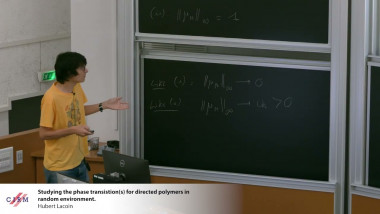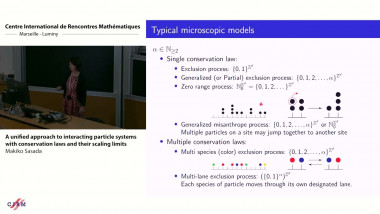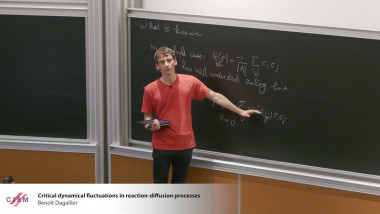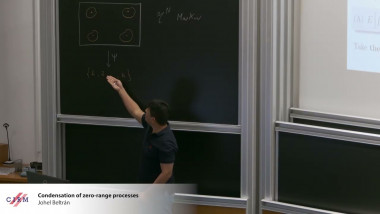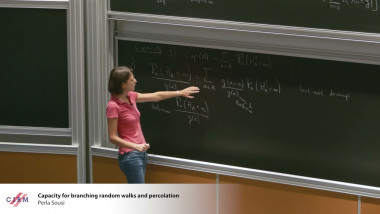Appears in collection : PDE/Probability Interactions: Particle Systems, Hyperbolic Conservation Laws / Interactions EDP/Probabilités : systèmes de particules, lois de conservation hyperboliques
The optimal transport between a random atomic measure described by the Poisson point process and the Lebesgue measure in d-dimensional space has received attention in diverse communities. Heuristics suggest that on large scales, the displacement potential, which is a solution of the highly nonlinear Monge-Ampere equation with a rough right hand side, behaves like the solution of its linearization, the Poisson equation driven by white noise. Most interesting is the case of dimension d=2, when the displacement inherits the logarithmic divergence of the Gaussian free field. For a large torus, this has been made rigorous on the macroscopic level (i.e. on the size of the torus) by recent work of Ambrosio.et.al.
We show that this is also true on the microscopic level (i.e. on the scale of the point process). The argument relies on a new and purely variational approach to the (Schauder) regularity theory for the Monge-Ampere equation, which allows for a rough right hand side, and which amounts to a quantitative linearization on all (intermediate) scales. This deterministic approach allows to feed in the existing stochastic estimates. This is joint work with M.Goldman and M.Huesmann.
